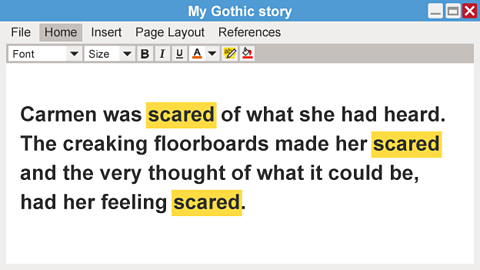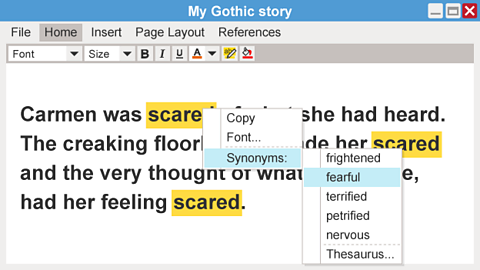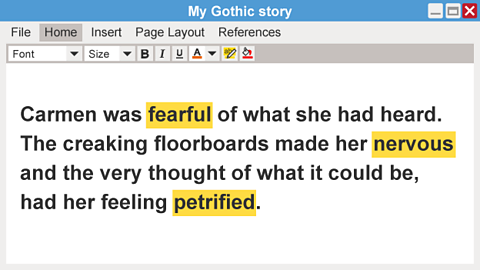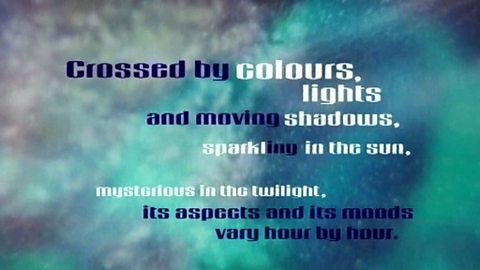Tone and style are about how you relate to others. Think about your audience and write in the style they expect.
The writer's 'voice'
We all have different ways of expressing ourselves in our speech and in our writing. In writing, this is sometimes called the writer’s ‘voice’.
Effective writers have a unique voice or style of writing.
Look at these two very different styles of writing:
- I suppose I could tell you all about where I was born, what it was like when Mum was still around, what happened when I was a little kid, all that kind of stuff, but it is not really relevant.
- My father's family name being Pirrip, and my Christian name Philip, my infant tongue could make of both names nothing longer or more explicit than Pip.
Question
One of these extracts is from Charles Dickens' novel, Great Expectations, first published in 1860. The other is from Kevin Brooks' novel Martyn Pig, published in 2002.
Which is which and how do you know?
Answer
The first excerpt was written by Kevin Brooks and the second was written by Charles Dickens.
Charles Dickens' sense of voice is very different from Kevin Brooks'. There are several reasons for this:
- they are writing in different time periods
- they are writing for different audiences
Even though their purpose is the same - to entertain - the style of writing has changed between 1860 and 2002… 142 years of language change!
Context, audience and purpose
Thinking through ‘CAP’ will help you decide what kind of ‘voice’ your writing needs. You will need to learn how to adapt your unique voice to suit the:
- context - are you writing something formal such as a letter or informal like a phone text message?
- audience - are you writing to your friends or someone in authority?
- purpose - are you trying to entertain, inform, explain or persuade – or perhaps all of these?
Try to determine the context, audience and purpose of the following texts.
Task 1
Question
NO WAY M8! I missed da train cuz the ticket machine weren’t workin. Wat a joke. Reckon I’ll get money bk?
Context: text message
Audience: friend
Purpose: describe
Task 2
Question
Dear Sir/Madam,
Due to an error with the ticketing machine, I was unable to collect my tickets and missed the train connection. Can you please refund the price of the ticket back to my account?
Context: letter
Audience: train company
Purpose: explain
Both pieces of writing give the same message: the person missed their train owing to an error with the ticket machine. But you need to consider:
- Would the train company have taken the information seriously if they had received it as a text message like the one above?
- Would the friend have given sympathy if they'd received the formal letter?
Changing the tone and style of ‘voice’ to suit the purpose is essential. Therefore, whatever kind of writing you need to do, always consider ‘CAP'.
Changing your vocabulary
One quick way to improve your style is to avoid repeating key words close together. It also helps to extend your vocabulary, for example, by using . Find ways to increase your vocabulary so that you can add new words to your writing.
If you are using a word processing package on a computer, you can often do this by ‘right clicking’ the mouse on an individual word and choosing the synonym menu option provided by the software. This will give you many different choices – but care is needed as the software is not foolproof.
Here the writer has done this with the word 'scared':
Improve your vocabulary

Image caption, 1. Highlight the key words which are repeated close together

Image caption, 2. Right click for more options

Image caption, 3. Replace repeated words to help improve your writing
1 of 3
You can also use a print or online thesaurus and dictionary to help you to generate new words that you can add to your work.
Get into the professional writer’s habit of reading back each sentence and paragraph you write to sense its liveliness and appropriateness for your reader and purpose. Put on your reader’s hat occasionally as you write and see what you can change for the better.
Repetition for effect
Of course, it is fine to repeat a key word if your purpose is to help the reader remember something. This can be especially useful when writing to persuade.
Style and genre
The important thing to consider when you are thinking about the style of your writing is the genre of the text that you are creating – the text type. Each separate type of text has its own well-known conventions (ingredients) for you to follow, ones your reader expects to find in your piece.
You need to become aware of various genres of texts to work out what ingredients you should add to your own. For example, look at the internet article, written for a young person's news website, below and identify its particular ‘genre conventions’.
First, as always, it helps to ‘CAP’ it:
Context - This text is written for a young person's news website on the topic of the government’s annual budget.
Audience - This is a news item aimed at children and teenagers, perhaps from about 8 to 14.
Purpose - The purpose of the text is to inform.
When you are writing, you do not need to include images or captions but you can include these as simple boxes with a label describing what the image would be, for example, 'Picture of frightened child with mother'.
Structuring your text
When structuring your writing consider the following:
- News articles need a headline to catch the eye and mind of the reader.
- There is often a sub-heading that gives key facts about the topic.
- The introductory paragraph gives answers to the journalist’s ‘5W+H’ questions. ‘Who’, ‘what’, ‘where’, ‘why’, ‘when’ and ‘how’ likely touched upon in the subheading.
- Further subheadings clarify the structure of the article. In this example the subheadings pose a list of questions.
- The paragraph then answers the question posed in the subheading.
- There is the use of a list.
- The article ends in a smooth and fluent way that leaves the reader feeling satisfied that all relevant information has been given.
The above genre conventions can be applied to your own article writing. However, it is not just the structure that you can adapt, you can also take tips from the style of the writing.
Here is an extract from the text.
Does it affect me?
You might not think it but the Budget does affect your life.
The Chancellor may decide to spend more or less money on schools and he may also choose to spend money on youth schemes in your area.
Adults may find they have more or less money to spend - which could mean more or less pocket money for you!
Ask yourself the following questions to help you pick out the style so that you can adapt it for your own use:
Is the writing formal or informal?The writing is formal. There is no use of slang and both the vocabulary choices and grammar (ie sentence construction) are ‘Standard English’.
Does the writer talk directly to the reader and, if so, is the writer chatty?The writer does talk directly to the reader, using personal pronouns such as 'you'. The question even uses the pronoun 'me', as if the writer is young, like the reader.
What is the vocabulary like?The vocabulary choices are straightforward making the text easy to read. We would expect this in a text aimed at young people. The writer does use some of the more technical language or ‘jargon’ of the kind expected in an article about a government’s budget, eg 'chancellor', 'duties' and 'taxes'.
What are the sentences like?The sentences are varied in length and are a mix of simple, compound and complex. They are straightforward and not too detailed.
What language techniques are used?The writer is using questions, personal pronouns, facts and opinions as well as what are called ‘modal’ verbs that suggest future possibilities rather than actual actions (for example, might and could).
By analysing the text in this way, you can uncover what style and tone you too could write in if you are asked to write a news article like this one.
Tone and style task
Read the following extracts and answer the questions which follow.
In a forgotten corner, however, almost hidden behind a dismal shrubbery, was a disused tool-shed of respectable proportions, and within its walls Conradin found a haven, something that took on the varying aspects of a playroom and a cathedral. He had peopled it with a legion of familiar phantoms, evoked partly from fragments of history and partly from his own brain, but it also boasted two inmates of flesh and blood. In one corner lived a ragged-plumaged Houdan hen, on which the boy lavished an affection that had scarcely another outlet. Further back in the gloom stood a large hutch, divided into two compartments, one of which was fronted with close iron bars. This was the abode of a large polecat-ferret, which a friendly butcher-boy had once smuggled, cage and all, into its present quarters, in exchange for a long-secreted hoard of small silver. Conradin was dreadfully afraid of the lithe, sharp-fanged beast, but it was his most treasured possession. Its very presence in the tool-shed was a secret and fearful joy, to be kept scrupulously from the knowledge of the Woman, as he privately dubbed his cousin.
–
Nai Nai’s body was placed in a tightly sealed coffin in the parlour. Buddhist monks dressed in long robes chanted their mantras. Ye Ye ordered us children to spend the night and sleep on the floor in the same room to keep Nai Nai company. Third Brother whispered in my ear that Nai Nai was going to push open the coffin lid and wander out at midnight. I was scared and couldn’t sleep. All night, while listening to the monks praying and watching their shining bald heads in the flickering candle-light, I half-yearned and half-feared that Nai Nai would crawl out and resume her place among us.
–
More on Writing skills
Find out more by working through a topic
- count2 of 7

- count3 of 7

- count5 of 7
